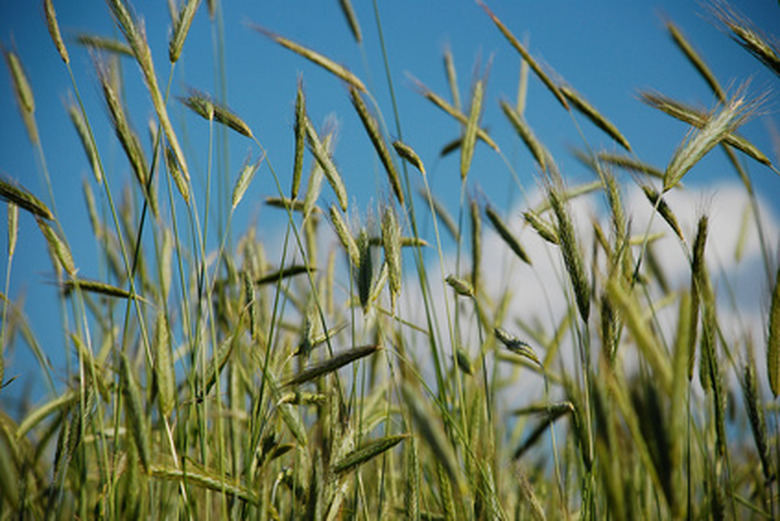Ryegrass Characteristics
Ryegrass is native to Asia, Europe and North Africa, but it grows throughout the world. Ryegrass remains one of the most widely used cool-season grasses because of its rapid establishment and long life. Ryegrass is a bunch grass, which means it emerges in clumps and spreads by tillers, or secondary shoots. Other characteristics of rye grass include a bright, shiny green color, coarse texture and dense growth habit.
Annual
Annual ryegrass also sells under the name Italian ryegrass. Traditionally, this type of grass lasted no longer than one growing season, and so suited for temporary use. New, improved varieties tend to live longer and even survive in acidic soils with low fertility. Annual ryegrass develops glossy leaves, a yellow-green base and an extensive root system that makes it an ideal solution for erosion control on slopes. It also works as suitable forage.
- Ryegrass is native to Asia, Europe and North Africa, but it grows throughout the world.
- Annual ryegrass develops glossy leaves, a yellow-green base and an extensive root system that makes it an ideal solution for erosion control on slopes.
Perennial
Perennial ryegrass survives several growing seasons and demonstrates slightly different leaf characteristics, such as more leaves lower on the stem and a narrower blade. Perennial ryegrass is not as cold or drought tolerant as the annual type, but it proves highly adaptable and capable of growth in well-drained or poorly drained soil. The plant withstands a lot of wear and foot traffic, and so is suited for lawn turf. It germinates and repairs quickly.
Intermediate
Intermediate ryegrass, also called short rotation ryegrass, is an improved variety resulting from a cross between annual and perennial ryegrasses. Intermediate ryegrass persists longer and proves more drought resistant than annual ryegrass. The intermediate type is not as cold hardy as perennial ryegrass, but it achieves higher yields and works well as a pasture grass.
- Perennial ryegrass survives several growing seasons and demonstrates slightly different leaf characteristics, such as more leaves lower on the stem and a narrower blade.
- Perennial ryegrass is not as cold or drought tolerant as the annual type, but it proves highly adaptable and capable of growth in well-drained or poorly drained soil.
Festulolium
A festulolium hybrid is a cross between annual or perennial ryegrass and meadow fescue. Festulolium grass demonstrates the high yields of ryegrass with the persistence, rapid regrowth and drought resistance of fescue. Festulolium grass does not possess the same cold-hardiness of other species, so it performs better when planted with other grasses. Festulolium grass serves as a hay, pasture and silage grass.
References
- Pennsylvania State University Cooperative Extension: Agronomy Facts-Ryegrass
- University of Hawaii Cooperative Extension: Annual Ryegrass
- Oregon State University Extension Service: Perennial Ryegrass (Lolium perenne L.)
- University of Wisconsin Cooperative Extension: Ryegrass Types for Pasture and Hay
- Ohio State University Extension: Ohio Agronomy Guide
